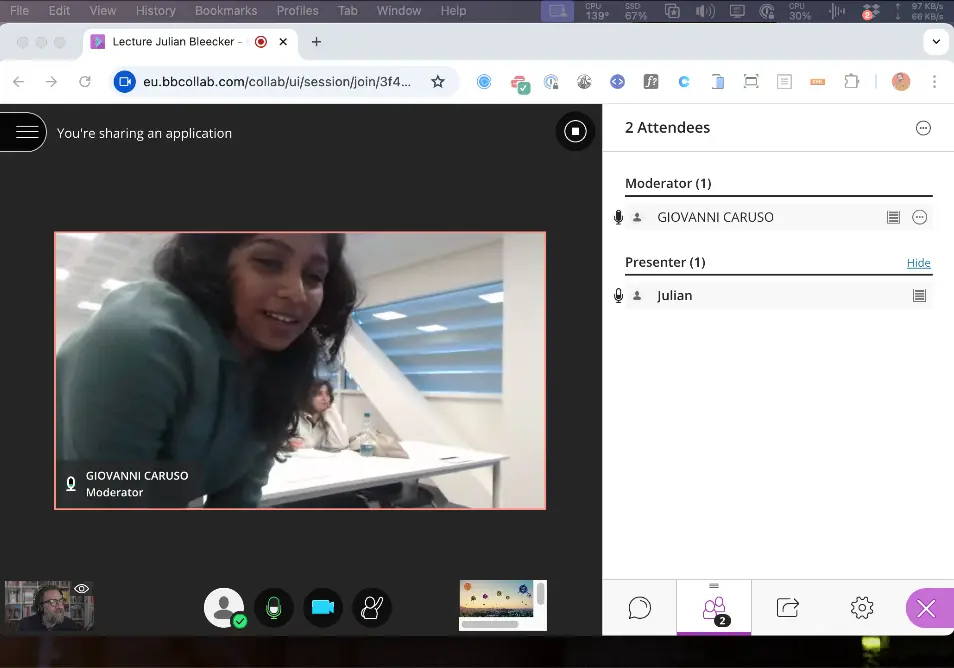
Talk Date: 10/10/24, 8:00 AM
Published On: Sep 18, 2024, 06:05
Updated On: Oct 14, 2024, 07:06
An early morning talk to a group of students from Silvio Giovanni’s course at Domus Academy, which had me reflecting on the importance of using imagination in design and technology. The lecture and follow-on discussion was focused on envisioning future possibilities, not to predict or speculate on commercial success, but to actively explore the “what-ifs” of our world and design compelling artifacts that convey these future scenarios. My goal was to illustrate how speculation and creativity play a crucial role in shaping the future, whether it’s within design, technology, or everyday life.
I tried emphasizing my creative and intellectual journey that lead to founding the Near Future Laboratory and the sort of accidental trajectory of my intellectual/academic life from engineering, towards the humanities, and integrating at some point later a deliberate creative practice. What I learned along the way that I tried to share is this sense that it’s not enough to stay confined to linear problem-solving methods. I think this is what led to me describing a hybrid approach that I ended up calling “Design Fiction”, which can be thought of as a process whereby one creates tangible prototypes of imagined futures to provoke thought and conversation. Engineering is that ‘tangible’ aspect, and the integration of this tangibility that is invigorated with a sensitivity towards being (ontology) which I derived from humanities scholarship. I then shared that this approach has been used through Near Future Laboratory to help organizations not only see potential worlds but sense-make through the artifacts so possibility feels ‘real’ to them.
This Imagine Harder theme came up as a key concept or motivating factor for me: If we, as designers, do not actively shape these futures, we risk living in someone else’s dream. Imagine living in a world dictated entirely by someone else’s vision — Elon Musk’s Mars colonies or algorithm-driven realities curated by faceless corporations. This isn’t just a business problem; it’s a cultural and existential challenge. We need to reclaim our collective ability to dream, speculate, and create the futures we want to inhabit, rather than passively accepting those served to us.
One of the highlights in the talk was the Q&A. One student described that they are working on design prototypes and speculative prototypes for LG Electronics. Their focus was on rethinking HVAC systems for both humans and pets, pushing the boundaries of conventional industrial design, where the industrial artifact is the tangible outcome. I wanted to address the ways they could go beyond creating simply a new appliance, but imagine what it means to build a humane home, where the concept of comfort and care extends to all inhabitants, both human, non-human, and companion species. We talked about using Design Fiction to communicate these ideas — not through static reports, but through artifacts like user manuals, advertisements, or even a speculative product catalog.
The students were hesitant at first, which is natural when pushing beyond traditional design constraints — but I think mostly because it was at the end of their day (and the start of mine..so I had the morning coffee advantage!) I think though that, for the couple of discussion/questions that came up, we had managed to develop a shared recognition that imagination, speculation, and a bit more emphasis on tools can inspire us to think in new ways and open up unexpected possibilities. Rational thinking and creative thinking are complimentary: when aiming to envision future possibilities or create innovative concepts, we need the freedom of imaginative thinking; this is where speculation and creative exploration come in. A simultaneous approach allows a window through which inspiration can enter into the room, and for the consideration of new, unexpected “what-if” questions to find a place to luxuriate, and provides space for creating artifacts and scenarios that extend beyond purely rational thinking.
Ultimately, the session was a reminder that being a creative in the world today means embracing ambiguity and speculation. It’s about bringing together disparate perspectives, translating them into new languages, and building bridges between what is and what could be. I left Domus Academy feeling hopeful — we might have started with a lethargic crowd, but we ended with a group beginning to grasp how imagination, even when it’s hard work, can be our greatest tool for shaping the future.